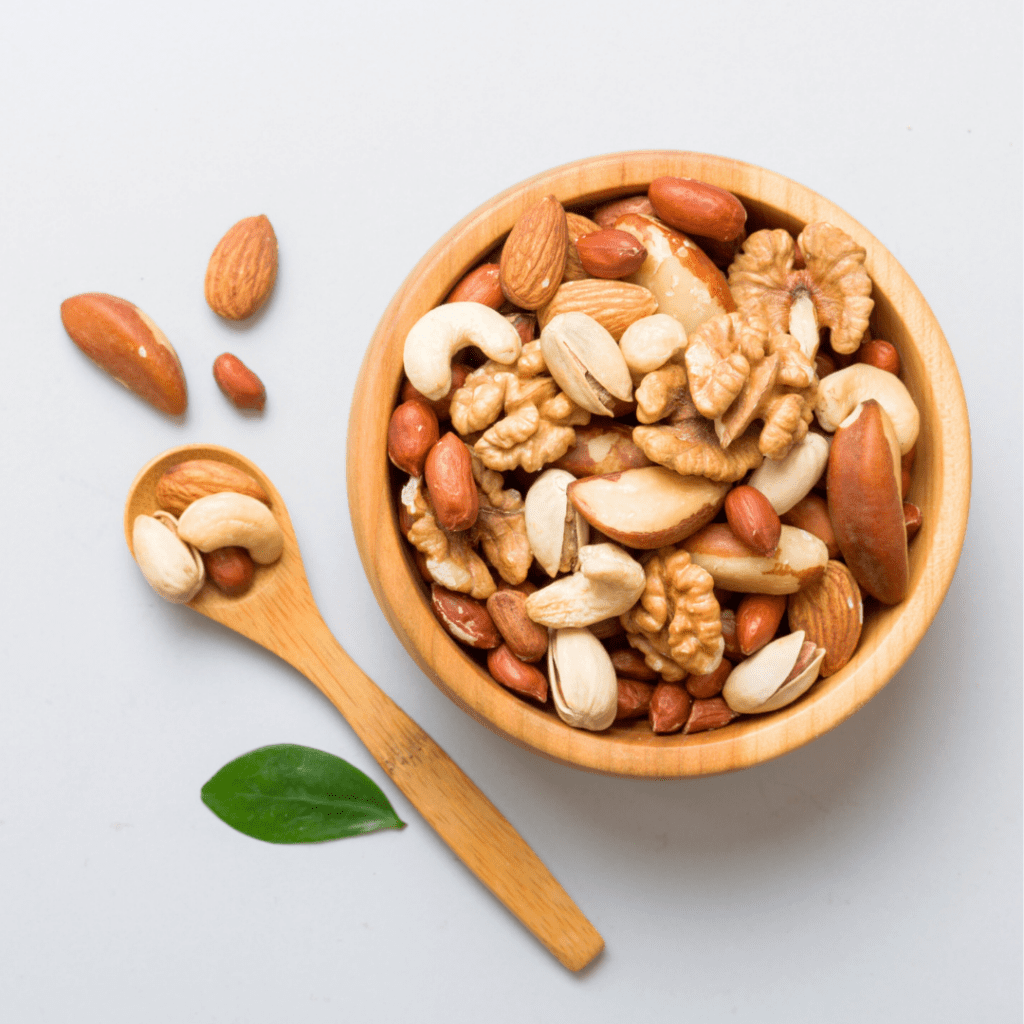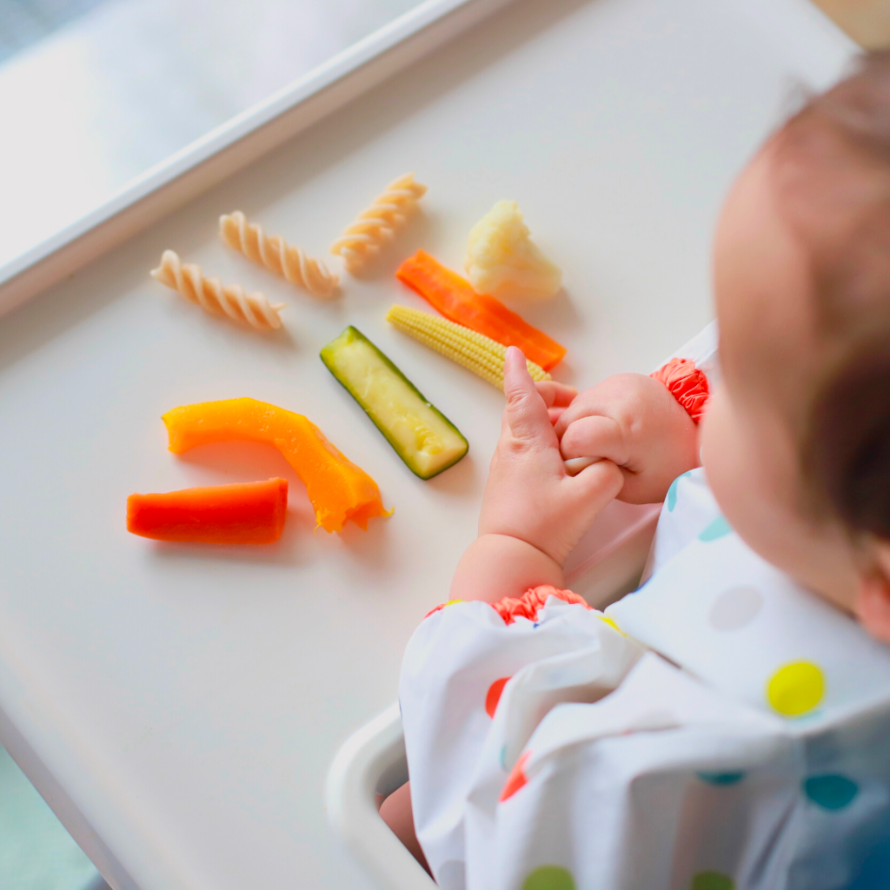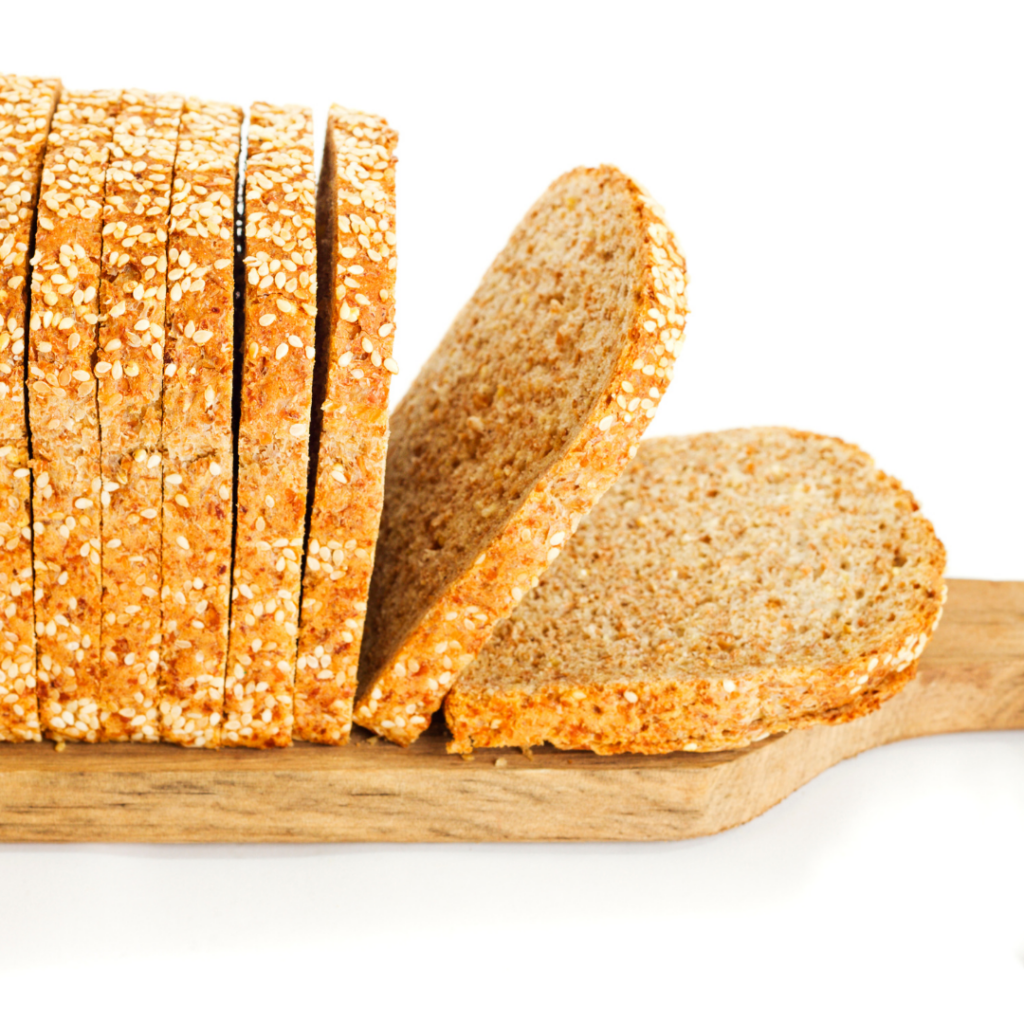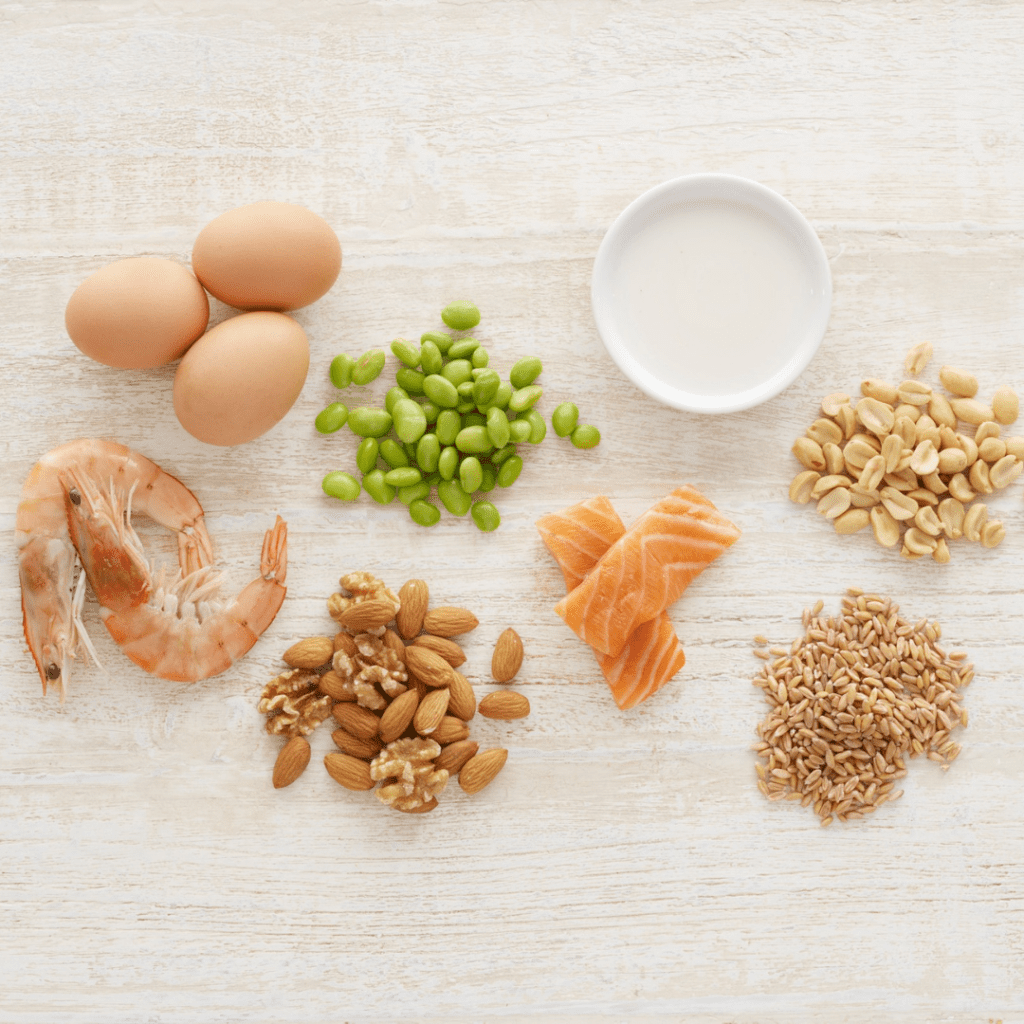- No Comments
- Chelsey Landry, RD
This post may contain affiliate links, please view our disclosure policy for more details.
Transitioning to solid foods can be an exciting journey with your little one. But, let’s be real, for some of us—especially if food allergies run in the family—it can stir up a whole lot of mixed emotions!
Peanuts and tree nuts can be particularly stressful as they are some of the top culprits when it comes to food allergies. As parents, we all want to do everything we possibly can to keep our little ones safe. But exposing them to allergenic foods can seem like you’re doing the exact opposite of that!
But fear not, we’re in this together, and we’ve got your back! Let’s tackle this topic head-on and ease those worries. Ready to dive in and uncover all the answers? Let’s do this!
If you want to take the stress out of introducing allergens to your baby, you’ll love our 60 Day Baby Led Feeding Meal Plan!
Created by dietitians, it’s designed to walk you through the first 60 days of starting solids with healthy, perfectly balanced meals, and slow texture progression over the weeks. Recipes are designed to strategically introduce allergenic foods, week by week, so you don’t have to think about how and when to do it all!
Best of all, we include weekly grocery lists, nutrition and feeding tips, and instructions on how to serve the food to your baby. With over 100 new foods introduced in the first 60 days, you’ll feel so confident knowing that your baby is getting the exposure to new foods and textures they need to prevent picky eating – with no extra planning or time wasted for you!
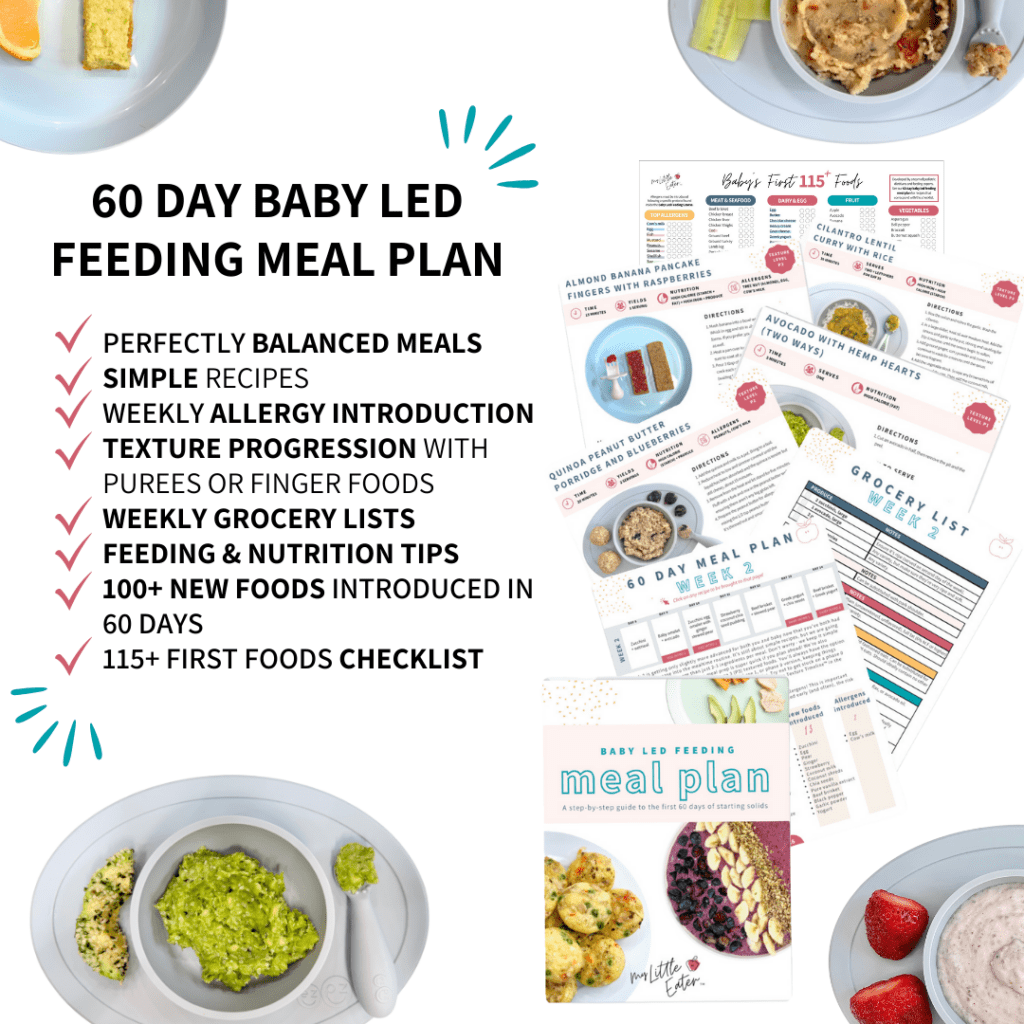
Table of Contents
When to introduce peanuts and tree nuts to babies
Peanuts and tree nuts can be introduced to babies once they reach around 6 months of age and show all of the developmental signs of readiness to start solids.
The recommendation is to introduce allergenic foods as early as possible and keep them in the diet often to maintain tolerance to the allergen. Concrete evidence shows that early ingestion of peanuts can reduce the risk of developing a peanut allergy by up to 80% (1).

This recommendation changes slightly if your little one is considered high-risk. The Canadian Paediatric Society, the American Academy of Allergy, Asthma and Immunology, and Dietitians of Canada identify infants as high risk if they have a close relative, like a parent or sibling, with a known food allergy. They also identify high-risk infants as those with severe eczema, hay fever, asthma, or another known food allergy themselves.
If this is the case, consult with a pediatrician, doctor, or allergist before proceeding. Current recommendations are to start these babies at 4-6 months to decrease the risk. Your doctor or allergist can confirm this protocol with you (1, 2).
Do you have to introduce peanuts and tree nuts separately?
Yes, peanuts and tree nuts have to be introduced separately.
This is because peanuts are actually not considered a nut at all, but rather part of the legume family. This family includes soybeans (think tofu), dried beans, chickpeas, and fresh peas (3). This means they technically aren’t related to tree nuts at all and are grown on the ground (3). As a result of them being from different families of foods, they are each considered their own category of allergens and therefore need to be introduced separately.
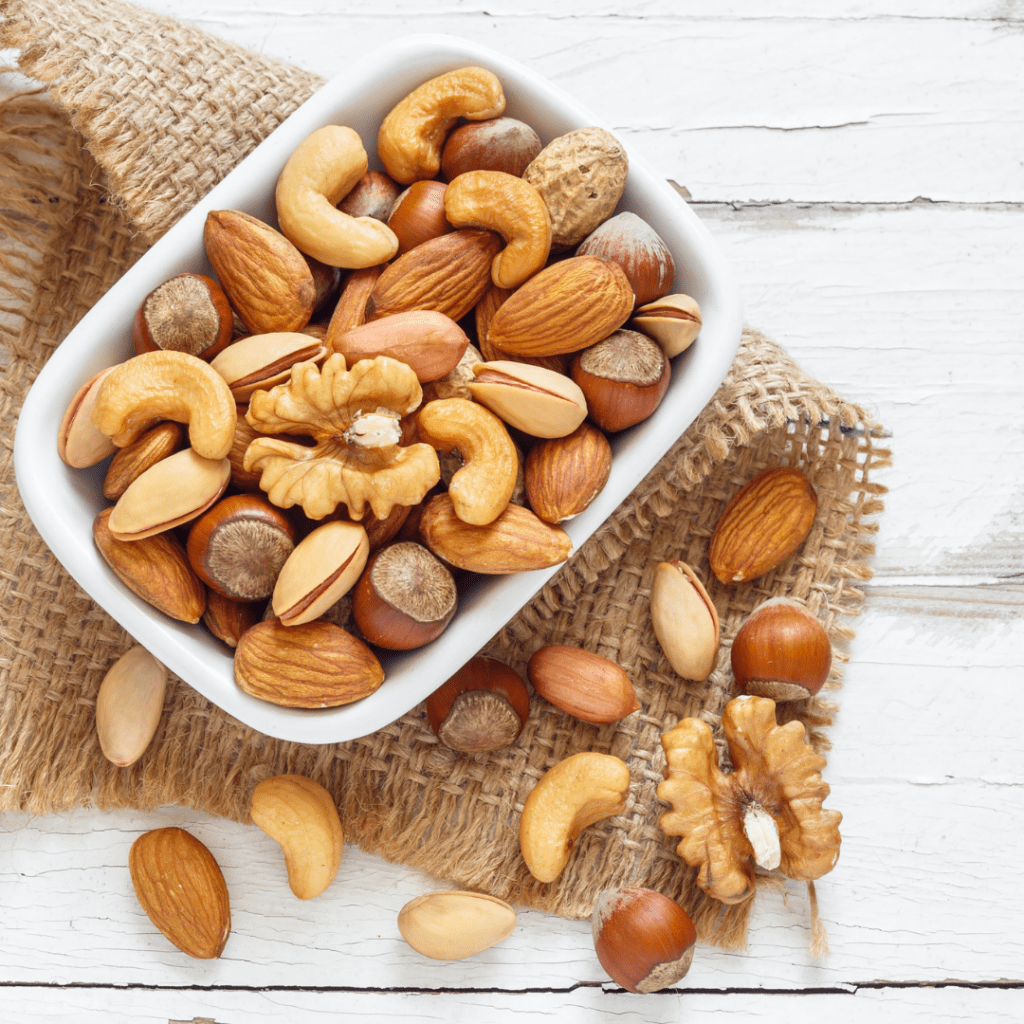
However, if a baby is allergic to any tree nuts, it can increase their risk of being allergic to peanuts. The reverse is also true. Approximately 40% of children with tree nut allergies are also allergic to peanuts (4).
What tree nuts do you need to introduce to your baby?
You want to ideally introduce as many tree nuts as possible to your baby. These include:
- almonds
- cashews
- pine nuts
- pistachios
- walnuts
- hazelnuts
- brazil nuts
- pecans
- chestnuts
- hickory nuts
- macadamia nuts (5).
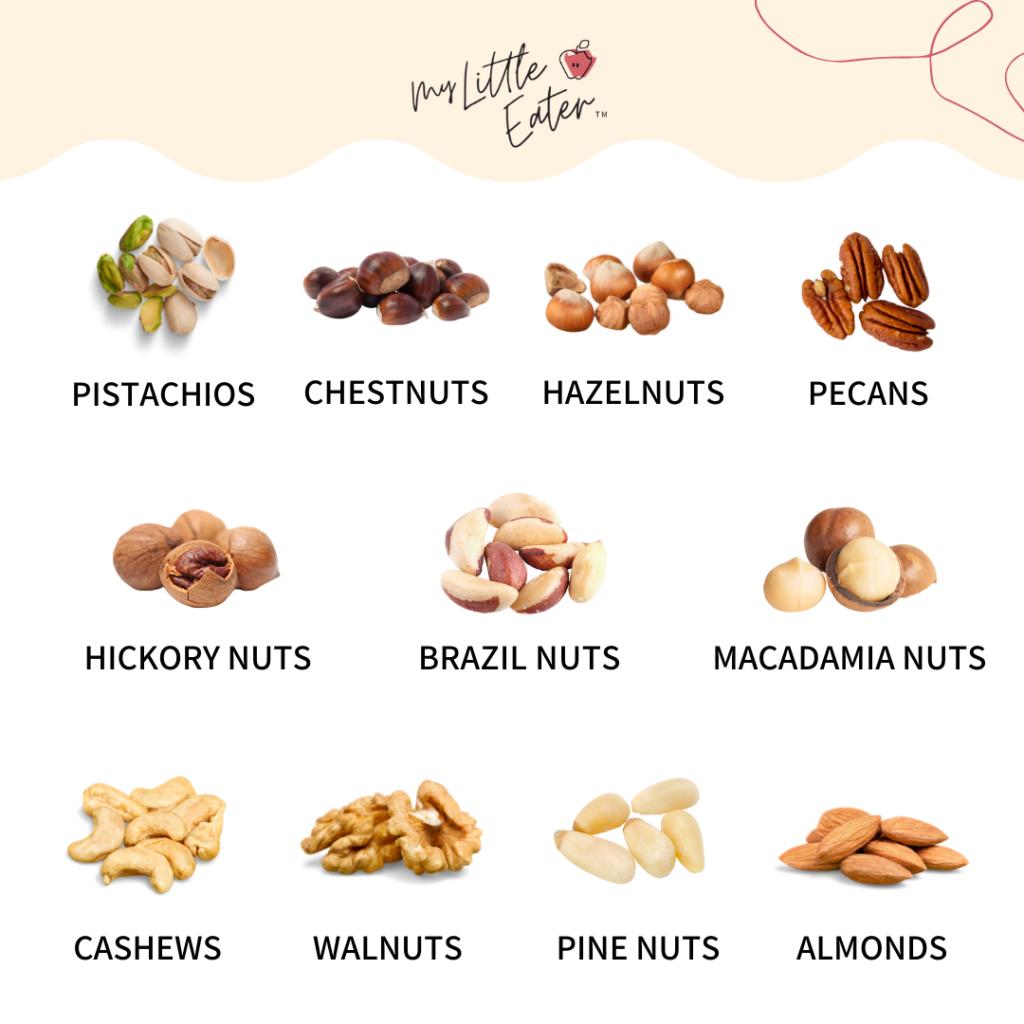
Of course, it may be hard to get through all of them, especially within the first year of life. If that’s the case, focus on the ones you consume the most or may more commonly come in contact with.
Note: If baby has a tree nut allergy, that doesn’t mean they’ll be allergic to all tree nuts. But, being allergic to one type of tree nut does greatly increase the risk of being allergic to the others (5).
Is coconut considered a tree nut?
Coconuts are identified as drupes, which are fleshy fruits with a hard stone containing a single seed. Coconut belongs to the same family as cherries, apricots, plums, and peaches (6). So, coconut is not considered a tree nut (5, 7).
That being said, the FDA classifies coconut as a tree nut despite its classification as a fruit (6, 8). Coconut was designated as a tree nut in a 2006 addition to the Food Allergy Labeling and Consumer Protection Act for food labeling purposes (6). Unfortunately, this can confuse those with a tree nut allergy as they’re often told to avoid all tree nuts and peanuts because of concerns about cross-contamination (6).
Of course, some people allergic to tree nuts have also reacted to coconut. However, there is limited evidence showing the relationship between allergies to tree nuts and coconut (6, 7).

MY LITTLE EATER’S RECOMMENDATION ON COCONUT:
You do not have to worry about introducing coconut as a top allergen. Serve it to your baby as you would any other non-allergenic food!
Protocol for introducing peanuts and tree nuts to babies
Start with only one of the nuts first, either peanuts or one of the 11 tree nuts listed above. Follow the steps below when introducing peanuts and all of the tree nuts to your baby.
Step 1: Choose a time early in the day to introduce the allergen so that you can monitor for symptoms if they happen.
Step 2: Mix 2 teaspoons of peanut butter (or any other tree nut butter) with warm water until it’s thinned out and smooth. Dip your finger or the tip of a spoon into the thinned-out nut butter and water mixture and offer it to your baby. Wait 10 minutes to see if a reaction develops.
During those 10 minutes, you can offer your baby any other food that is not a top allergen to keep them happy and interested in the meal!

Step 3: Once you’ve offered the peanut butter and water mixture and you’ve noticed no reaction, you can offer the rest of the mixture on its own or mixed into another non-allergenic food (like infant cereal, fruit, or veggies). Continue to watch for symptoms up to 24 hours later.
Step 4: Reoffer the allergen again the next day. You don’t have to wait 10 minutes to see if a reaction develops on the second day. Use any of the options below in the “How to safely serve peanuts and tree nuts to baby” section and offer as you would any other food.
Note: An allergic reaction can be much worse the second time around! Doing it twice allows you to make sure there were no symptoms missed the first time around because they typically aren’t as severe until the second exposure.
Step 5: This final step is optional. Reintroduce the allergen for a third day to ensure that a total of 2g has been consumed. With babies, it’s hard to know exactly how much they’ve eaten, so this third introduction is for reassurance that they got a true exposure to the allergen (based on the most up-to-date research on how much they need to eat to count as an exposure).

This is how we do it in our 60 Day Baby Led Feeding Meal Plan! It allows you to stress less about how much of it they eat in one meal because it can be hard to track – plus – your baby may not be as interested in eating one of those days and we never want the experience to be forced. So think of the third day as your safety net! If your baby didn’t eat as much of the allergen on day one or two, offering it again on day three gives them another chance to try eating it, and offers you more confidence in the results.
We genuinely understand that introducing allergens like peanuts can be very scary and nerve-wracking for many parents. These steps may even feel daunting and like a lot of extra work. However, with peanuts and tree nuts being some of the most common allergens, we do believe these steps are necessary for keeping your little one safe.
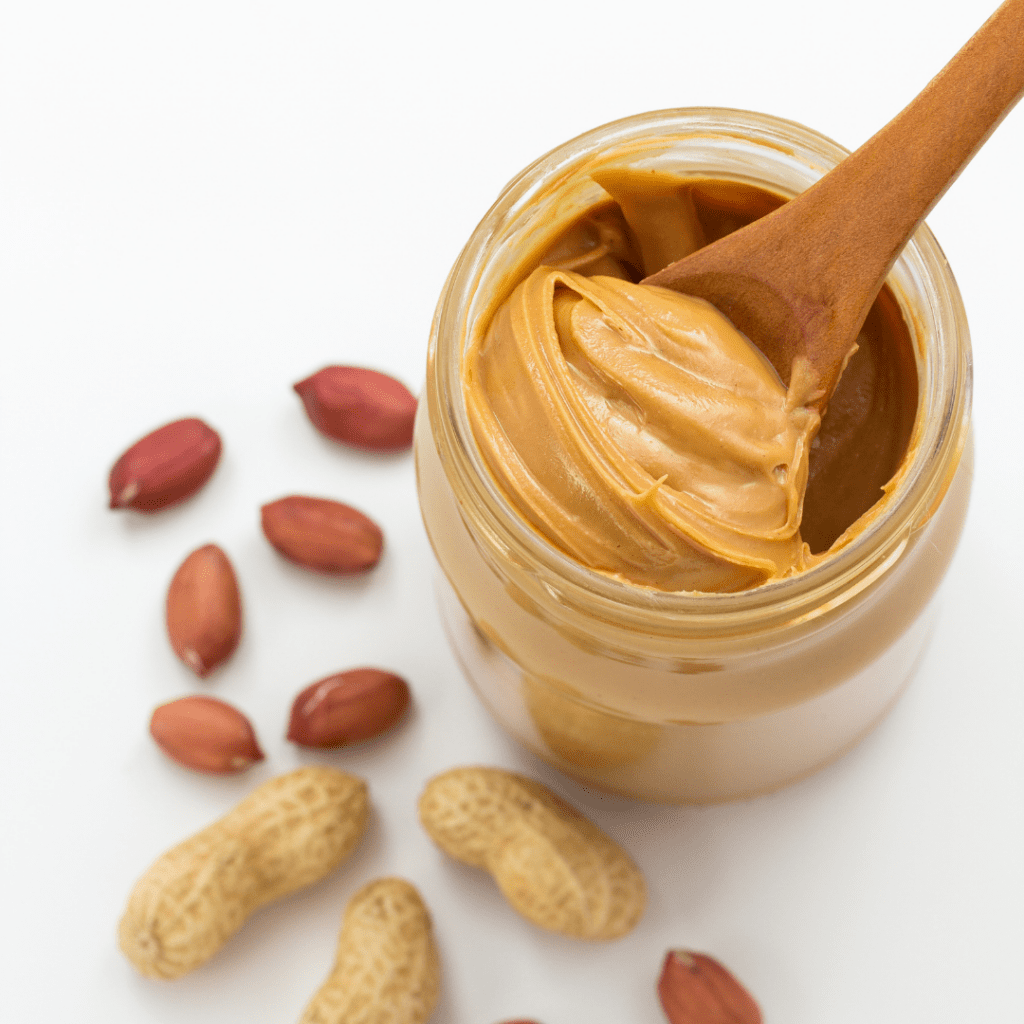
Once you’ve finished with the introduction protocol, you’ll want to wait 2 days before switching to a different type of allergen. This helps make it easier to track any symptoms as you’ll be able to tell which of the highly allergenic foods is causing any type of reaction.
After a common food allergen has been introduced to your baby and no reactions have occurred, it’s important to make sure that your baby is repeatedly exposed to the allergen. Ideally, a few times per week if possible, to maintain tolerance to the allergen and ensure baby has consumed enough to count as a proper exposure (10).
Research has shown that if children consume at least 2 grams (equal to ½ tsp) of peanut protein weekly, they are less likely to develop a peanut allergy (9). You can use this same recommendation for introducing tree nuts, too! Learn more about introducing highly allergenic foods to babies.
If you want guidance on introducing allergens strategically with reminders along the way of how to do so following recommended protocols, grab our 60 Day Baby Meal Plan. Take all the guesswork out of introducing allergens, and don’t worry about memorizing the steps – we’ve got you covered!
Symptoms of an allergic reaction
An allergic reaction to peanuts or tree nuts can happen within minutes or up to several hours after eating the food that had the allergen. If your baby is having an allergic reaction, there may be a noticeable change in the sound of their cry, drooling, vomiting immediately after feeding, or behavioral changes like irritability, unexpectedly becoming very sleepy or difficult to wake up, and/or clinging to a caregiver (11).
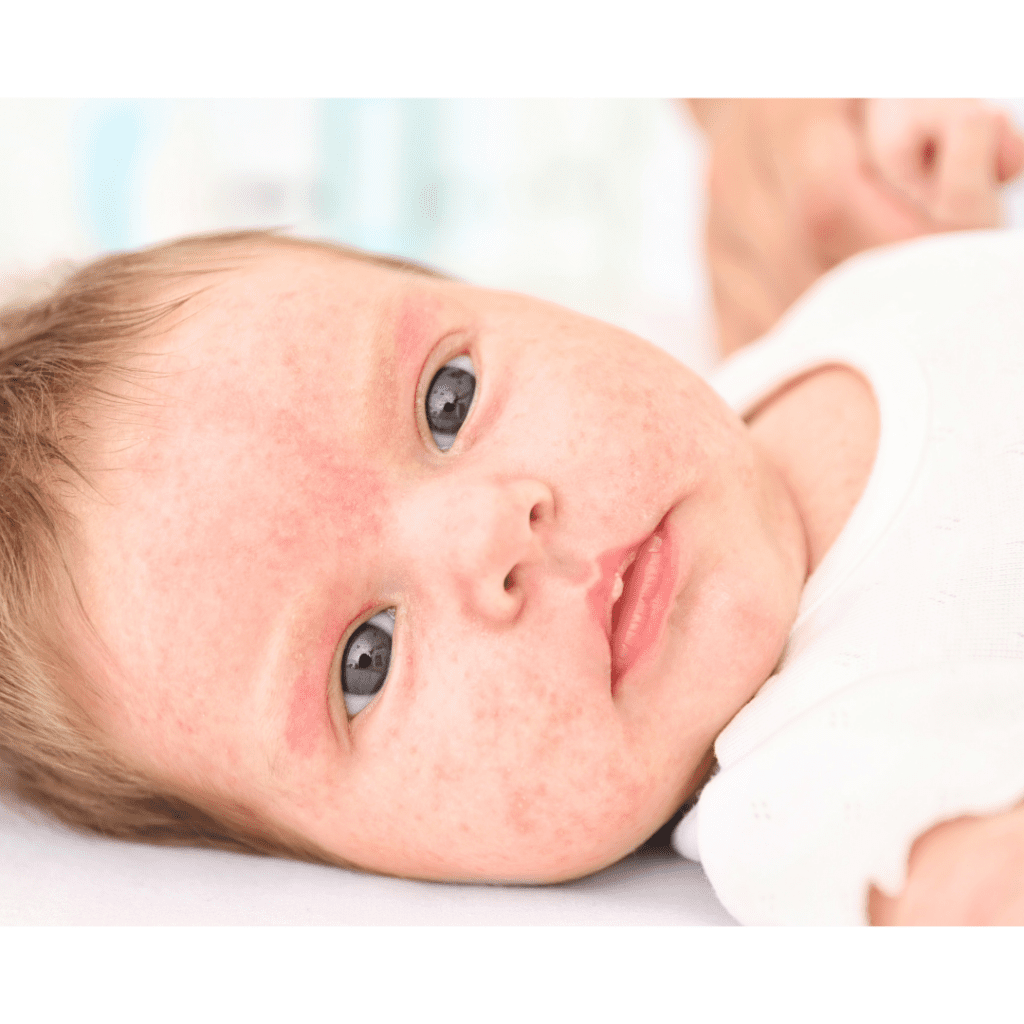
If a baby is experiencing an allergic reaction to peanuts or tree nuts, they may experience one or a combination of these symptoms (11):
- Skin: hives, swelling (face, lips, tongue), itching, warmth, or redness.
- Respiratory (breathing): coughing, wheezing, shortness of breath, chest pain/tightness, throat tightness, hoarse voice, nasal congestion or hay fever-like symptoms (runny itchy nose and watery eyes, sneezing), or trouble swallowing.
- Gastrointestinal (stomach): nausea, pain/cramps, vomiting, or diarrhea.
- Cardiovascular (heart): paler than normal skin color or blue color to their skin, weak pulse, passing out, dizziness or lightheadedness, or shock.
Note: Symptoms of anaphylaxis generally include two or more of the body systems listed above.
Anaphylaxis can be life-threatening and requires immediate medical attention. If you believe your baby is having an anaphylactic reaction, call 911 immediately.
If your baby develops any symptoms after they eat peanuts or tree nuts, you should consult with your allergist for further testing, as they may require an epi-pen injector.
The results of a skin prick test done on a 6-month-old baby are seen below. This test was performed at an allergy clinic to determine if the baby had any immediate allergic reactions.

How to safely serve peanuts and tree nuts to babies
You can begin serving peanuts and tree nuts to your baby regularly as a puree or a finger food once you’ve completed the initial protocol described above and have ruled out the possibility of an allergy to peanuts or tree nuts. The protocol described above is the easiest way to ensure your baby is consuming enough to count as an exposure, which is why we recommend it for those first introductions as opposed to these other options.
How you serve peanuts or tree nuts can depend on your baby’s stage of development or feeding style. It doesn’t matter whether you’re starting with purees or finger foods, there are many options for including them in your baby’s diet!
Note: Whole peanuts or tree nuts should never be given to your baby, as this is a choking hazard. Big globs of nut butter can also be a choking hazard. Learn more about choking hazards for baby.
Puree options
- Mix a small amount of nut butter right into a puree like yogurt or applesauce.
- Finely grind nuts into powder form (or use nut flours) using a food processor and sprinkle them on top of yogurt, oatmeal, hummus, or any other pureed food.

Finger food options
- Spread a very thin layer of nut butter on toast or a baby-safe cracker like rice rusks. At the end of this blog, we’ve included a recipe for peanut butter and jam rice rusks that would be perfect!
- Use ground nuts or nut flours as a coating for slippery finger foods like bananas, avocados, or mangos. This adds grip, flavor, texture, and a nutritional boost!
- Finely ground nuts or nut flours can be used as a sprinkle topping on finger foods like toast or pasta.
- Include nut butter, ground nuts, or nut flour as an ingredient in baked goods like pancakes or muffins and serve as a finger food.
Peanut puff snacks (eg. Mission Mighty Me or Puffworks) made from peanuts are another great finger food option. As an added bonus, some are made to be the perfect size and shape to help develop eating skills.
What is the best nut spread for babies?
Nut butter is one of the most popular ways to include peanuts or tree nuts in a baby’s diet and they are a great source of healthy (unsaturated) fats for your growing baby or toddler. We recommend choosing an all-natural version, just the nut, oil, and maybe salt. If possible, avoid overly processed ones with added sugar, canola oil, or other ingredients.
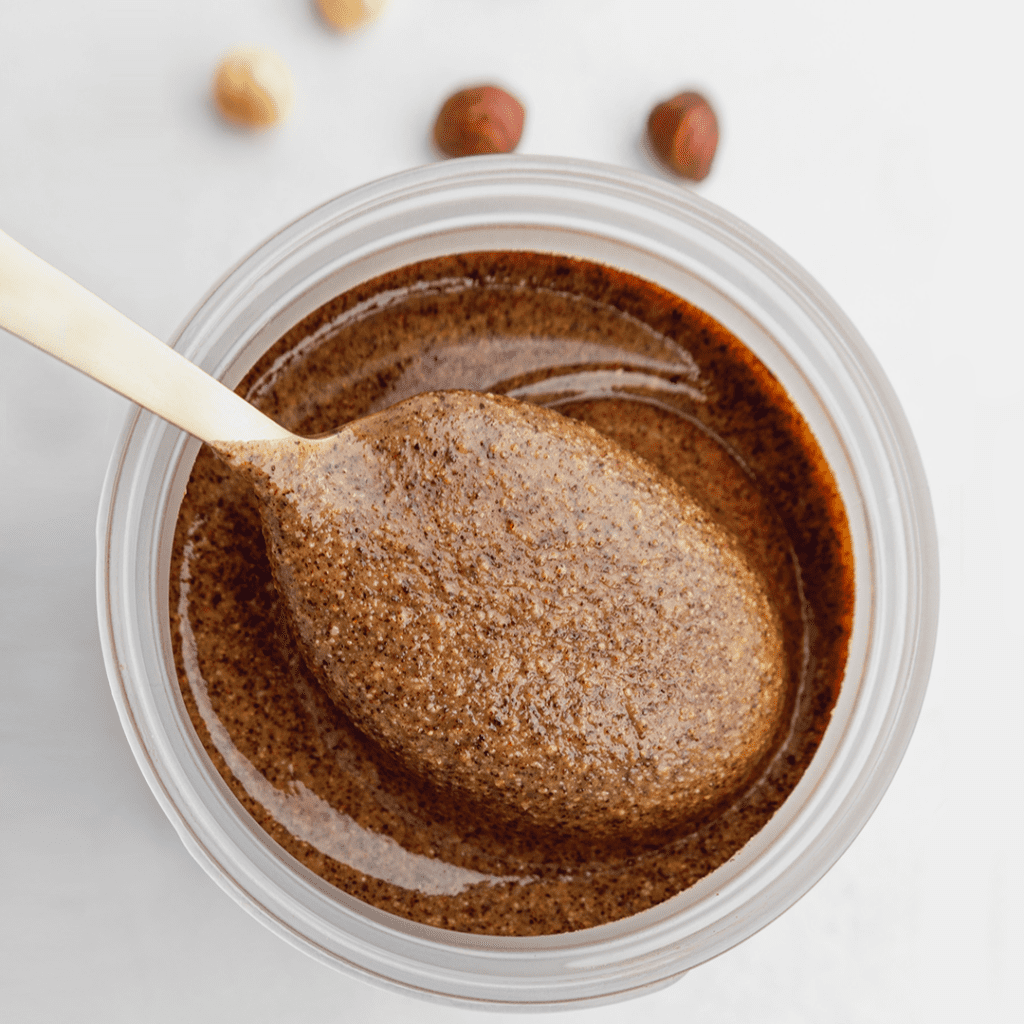
One of our favorite nut spreads for babies are nomz organic nut butters. They’re full of pure, healthy fat and contain only one single ingredient – just the nut in butter form. With four different varieties to choose from including almond, pistachio, hazelnut, and macadamia nut, they’re an easy way to introduce a few of the tree nuts.
You can get 15% off any nomz products using code MYLITTLEEATER15 at checkout!
Treatment for nut allergies
Immunotherapy is an emerging and exciting treatment for those with peanut allergies (1, 12). To date, researchers have focused on two forms of immunotherapy. These are oral immunotherapy and epicutaneous immunotherapy (1).

Oral immunotherapy treatment works by having children exposed to peanuts in the form of a pill. This allows for safe, ongoing peanut exposure (1). The treatment starts with a low dose. It’s gradually increased over time to help children develop a tolerance to the allergen (1). Studies have shown that oral immunotherapy has helped with desensitization with rates between 67% and 92% (1).
Epicutaneous immunotherapy is the other method in which a peanut patch is applied to the surface of the skin (1).
Immunotherapy doesn’t eliminate the allergy completely. However, it could help decrease the severity of the reaction your child has if they’re accidentally exposed to it! Researchers have also determined that this treatment may work for some, but not others (12).
FAQs on peanut and tree nut allergies
What should you do to prepare for an allergic reaction?
Before offering an allergenic food for the first time, there are some things that we recommend having on hand and being prepared for.
Firstly, you’ll want to have a plan in place for if they have a reaction that requires medical attention. We recommend being prepared to call 911, and though it may seem silly, check that your phone is fully charged and near you while you introduce foods. If your baby has a severe reaction, especially if you’re concerned about possible anaphylaxis, this is the safest option.
It certainly doesn’t hurt to be certified in first aid as well just in case of severe reactions. We recommend the Infant CPR Course by Safe Beginnings and you can use code MYLITTLEEATER for 20% off.
You’ll also want to have the number available for a nurse helpline, your doctor’s office, urgent clinic, or whatever other medical service is in your area, for reactions that you’re concerned about but aren’t necessarily emergent. This can help put your mind at ease and decide whether your baby needs to be seen immediately or if you can book an appointment for follow-up at a later date.
A common recommendation we hear frequently is to have Benadryl on hand to treat symptoms. This is no longer recommended due to the side effects of Benadryl in babies. As always, speak with your doctor before offering any medications to your child.
If baby is allergic to peanuts, are they allergic to all nuts?
Not necessarily! If your baby is allergic to peanuts, they may still be able to eat all other types of tree nuts. There is approximately a 25-50% chance your baby will be allergic to tree nuts if they have a peanut allergy (1, 13).
Since peanuts belong to the legume family, peanut allergies can be associated with allergies to lentils, chickpeas, and peas. However, these associations are less frequently reported (14).
How do you introduce tree nuts to a baby with a peanut allergy?
Since peanuts and tree nuts are two different allergens, follow the same protocol mentioned above when introducing allergens to baby for the first time.
While we recommend the same protocol for both allergens, if your child has a peanut allergy or any other food allergies, they’re considered high risk. Therefore, you should consult with a pediatrician, doctor, or allergist before proceeding and introducing any of the other top allergens, including tree nuts.
How do you introduce nuts to your baby if you're allergic?
If you or a sibling in the home has a peanut or tree nut allergy, we truly understand how scary it can be to even think about bringing the allergen into your home, not to mention actually having to offer it to your 6-month-old baby.
If you or the baby’s sibling has a nut allergy, that means your baby is at high risk for also having a nut allergy. Therefore, we recommend you consult with a pediatrician, doctor, and/or allergy specialist before proceeding with introducing any nuts to your baby.
Your doctor or allergist may be able to assist you with introducing the allergen in a safe environment. Discuss your concerns and ask them how you should introduce the allergen, especially if you’re unable to bring it into the home due to a parent or sibling having a severe nut allergy.
Depending on your risk level, what your allergist says, and of course, your comfort level, you may be able to have another adult offer the food to your baby at your home. Once your baby tolerates the allergenic food, you can begin offering it outside of the home to continue with regular exposures. For example, at a relative’s home that is regularly visited or in an outdoor setting, like a park (15).
Many families are successful in offering allergenic foods safely in the home, specifically by carefully cleaning surfaces and having designated eating areas, such as highchairs and tables. They’re also careful about properly washing their hands with soap and warm water before and after serving or eating the allergen. This helps reduce the risk of spreading food within the home (15). Finally, they teach household members the importance of not sharing food (15).
If baby has a peanut allergy, can they have peanut oil?
If you have a peanut allergy, avoid cold-pressed, expelled, or extruded peanut oils. These are sometimes called gourmet peanut oils. These oils are not highly refined and may contain small amounts of peanut protein (16).
However, studies show that most people with peanut allergy can safely eat refined peanut oil as the peanut protein is more denatured (aka it’s broken down) (16). If you are allergic to peanuts, ask your doctor if you should avoid highly refined peanut oil.
Can you suddenly develop a peanut or tree nut allergy?
Yes, you can develop an allergy to peanuts or tree nuts (or any of the other allergens) at any age, even to a food that you’ve safely eaten before (17).
Can you outgrow peanut or tree nut allergies?
In the past, most people thought that peanut allergies would last a lifetime. However, more recent studies have determined that about 20% of children diagnosed with a peanut allergy can outgrow it (11). As for tree nut allergies, fewer than 10% of children diagnosed with a tree nut allergy outgrow it (18).
Always talk to your doctor or an allergist before reintroducing peanuts or tree nuts into your child’s diet if you think they may have outgrown their allergy.
Are peanut and tree nut allergies common?
Studies have reported the severity of peanut allergy in the U.S. and EU populations and found that it affects 0.6% to 1% of the total population (14). Research shows over 2% of all children have tree nut allergies and about 80-90% will carry these allergies into adulthood (19, 20).
Don’t forget about our 60 Day Baby Led Feeding Meal Plan, with recipes designed to strategically introduce allergenic foods, week by week, so you don’t have to think about how and when to do it all!
Created by dietitians, it’s designed to walk you through the first 60 days of starting solids with healthy, perfectly balanced meals, and slow texture progression over the weeks.
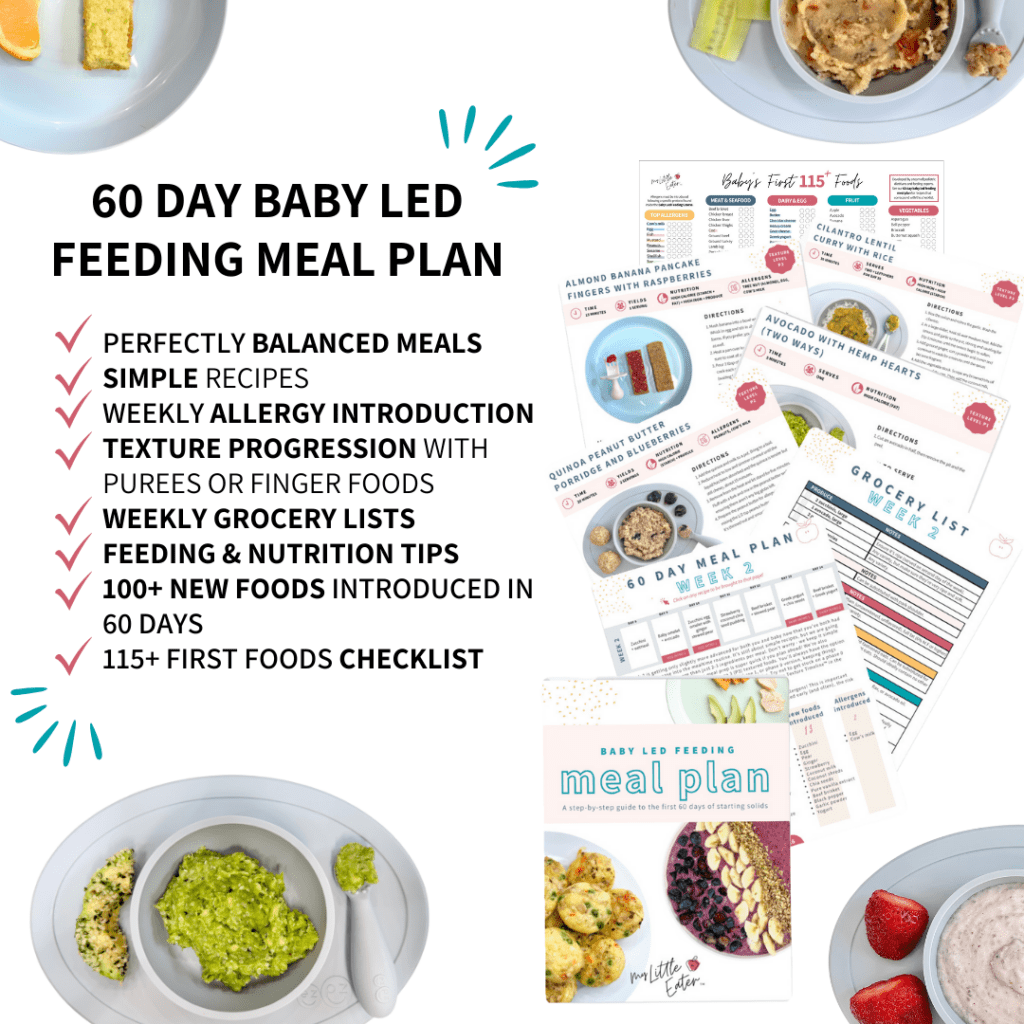
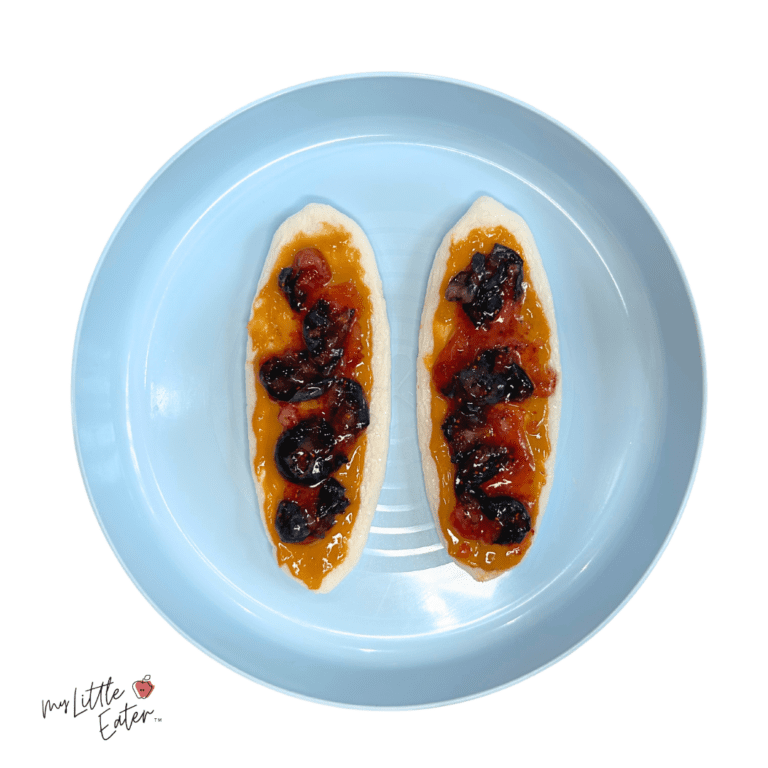
Nut butter and “jam” on rice rusks
Ingredients
- 3-4 rice rusks
- 1-2 tsp all-natural peanut butter
- 1/4 cup blueberries, mashed (reserve a couple to serve as finger food, if desired)
Instructions
- Spread a thin layer of peanut butter onto each rice rusk (approximately 1/4 tsp on each), ensuring there are no thick globs.
- Lightly smash the blueberries with the back of a fork and evenly spread them out onto the rice rusks (on top of the peanut butter).
Notes
- Feel free to swap out the all-natural peanut butter with nomz organic nut butters. You can choose any of their four delicious nut butters (almond, pistachio, hazelnut, or macadamia) for a different flavor experience for your baby!
- Nutrition tip - Sprinkle hemp or ground flax seed on top of each PB&J finger for added nutrition.
- Substitutions - If your baby was found to have a peanut allergy, swap peanut butter for sunflower seed butter or omit it altogether. If making this meal once baby has been introduce to wheat, feel free to swap rice rusks with toast.
DID YOU FIND THIS HELPFUL? PIN IT TO SAVE FOR LATER!
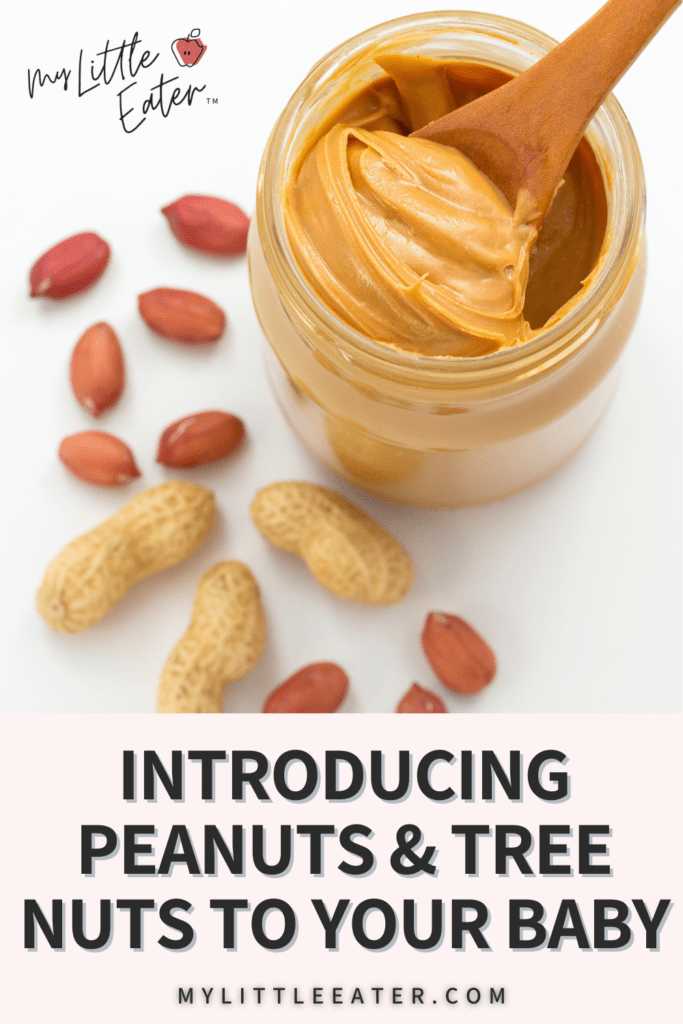
References
- Abrams, E. M., Chan, E. S., & Sicherer, S. Peanut allergy: new advances and ongoing controversies. Pediatrics, 145(5), 2020.
- Abrams, E. M., Hildebrand, K., Blair, B., & Chan, E. S. (2019). Timing of introduction of allergenic solids for infants at high risk. Paediatr Child Health, 24(1), 56-7, 2019.
- If someone has a peanut allergy, should they avoid all legumes? Food Allergy Canada. 2020. Retrieved from https://foodallergycanada.ca/mythbuster-if-someone-has-a-peanut-allergy-should-they-avoid-all-legumes/
- Patterns of tree nut sensitization and allergy in the first 60 years of life in a population-based cohort. McWilliam V, et al.. J Allergy Clin Immunol; 143(2):644, 2019.
- Tree nuts. Food Allergy Canada. Retrieved from https://foodallergycanada.ca/allergies/tree-nuts/
- Polk, B. I., Dinakarpandian, D., Nanda, M., Barnes, C., & Dinakar, C. Association of tree nut and coconut sensitizations. Annals of Allergy, Asthma & Immunology, 117(4), 412-416, 2016.
- Tree nuts. Government of Canada. 2017. Retrieved from .https://www.canada.ca/content/dam/hc-sc/documents/services/food-nutrition/reports-publications/food-safety/2017-treenuts-noix-eng.pdf
- U.S. Food & Drug Administration. 2023. Retrieved from https://www.fda.gov/industry/fda-basics-industry/section-201qq-act-defines-term-major-food-allergen-include-tree-nuts-addition-three-examples
- Perkin, M. R., Logan, K., Tseng, A., Raji, B., Ayis, S., Peacock, J., … & Lack, G. Randomized trial of introduction of allergenic foods in breast-fed infants. New England Journal of Medicine, 374(18), 1733-1743, 2016.
- Dietary Exposures and Allergy Prevention in High-Risk Infants|Canadian Paediatric Society. Retrieved from https://cps.ca/%20documents/position/dietary-exposures-and-allergy-prevention
- Reaction signs and symptoms. Food Allergy Canada. Retrieved from https://foodallergycanada.ca/food-allergy-basics/preventing-and-treating-allergic-reactions/reaction-signs-and-symptoms/
- Why immunotherapy for peanut allergy works for some, not everyone. National Institute of Environmental Health Sciences. 2023. Retrieved from https://factor.niehs.nih.gov/2023/2/science-highlights/peanut-allergy-immunotherapy#:~:text=2023.,allergen%20tolerance%20in%20peanut%20allergy.
- Verma AK, Kumar S, Das M, Dwivedi PD. A Comprehensive Review of Legume Allergy. Clinical Reviews in Allergy & Immunology. 2013;45(1):30-46.).
- Lieberman, J. A., Gupta, R. S., Knibb, R. C., Haselkorn, T., Tilles, S., Mack, D. P., & Pouessel, G. (2021). The global burden of illness of peanut allergy: a comprehensive literature review. Allergy, 76(5), 1367-1384, 2021.
- Early Introduction of Allergens. Food Allergy Canada. 2019. Retrieved from https://foodallergycanada.ca/wp-content/uploads/EarlyIntro_Web.pdf
- Peanut Allergy. Food Allergy Research & Education. Retrieved from https://www.foodallergy.org/living-food-allergies/food-allergy-essentials/common-allergens/peanut
- Food Allergy Myths and Misconceptions. Food Allergy Research & Education. Retrieved from https://www.foodallergy.org/resources/food-allergy-myths-and-misconceptions
- Tree Nut. American College of Allergy, Asthma, & Immunology. 2023. Retrieved from https://acaai.org/allergies/allergic-conditions/food/tree-nut/
- Mcwilliam V, et al. The prevalence of tree nut allergy: a systemic review. Curr Allergy Asthma Rep 2015;15(9):54
- Prevalence of peanut allergy in primary-school children in Montreal, Canada. J Allergy Clin Immunol 2003;112(6):1223

Chelsey Landry, RD
Community Dietitian at My Little Eater Inc., and bunny-mom to Hickory. Chelsey offers one-on-one counselling to parents of babies and toddlers that need more customized support. Learn more by booking a free discovery call with her today!

Chelsey Landry, RD
Community Dietitian at My Little Eater Inc., and bunny-mom to Hickory. Chelsey offers one-on-one counselling to parents of babies and toddlers that need more customized support. Learn more by booking a free discovery call with her today!
